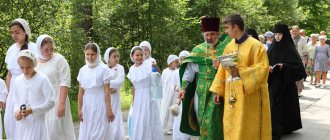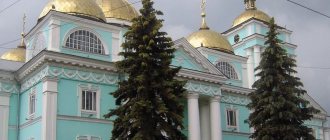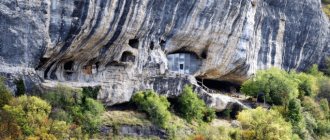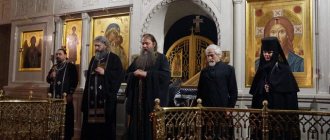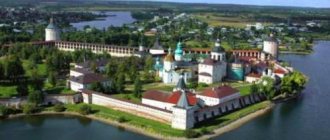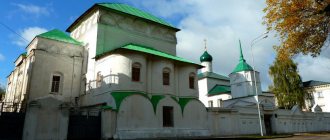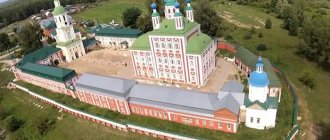Mir
Russia Murmansk region Trifonov Pechenga Monastery Map loading in progress...
{"format":"leaflet","minzoom":false,"maxzoom":false,"limit":50,"offset":0,"link":"all","sort":[""], "order":[],"headers":"show","mainlabel":"","intro":"","outro":"","searchlabel":"\u2026 \u0441\u043b\u0435\ u0434\u0443\u044e\u0449\u0438\u0435 \u0440\u0435\u0437\u0443\u043b\u044c\u0442\u0430\u0442\u044b","default":"","import-annotation":false,"width ":"auto","height":"350px","centre":{"text":"","title":"""link":"""lat":69.4259809999999930596459307707846164703369140625,"lon": 31.05849299999999857391230762004852294921875,"icon":""},"title":"","label":"","icon":"","lines":[],"polygons":[],"circles":[ ],"rectangles":[],"copycoords":false,"static":false,"zoom":8,"defzoom":14,"layers":["OpenStreetMap"],"image layers":[] ,"overlays":[],"resizable":false,"fullscreen":true,"scrollwheelzoom":true,"cluster":false,"clustermaxzoom":9,"clusterzoomonclick":true,"clustermaxradius":80, "clusterspiderfy":true,"geojson":"","clicktarget":"","showtitle":true,"hidenamespace":false,"template":"","userparam":"","activeicon": "","pagelabel":false,"ajaxcoordproperty":"","ajaxquery":"","locations":[{"text":"\u003Cb\u003E\u003Ca href=\"/palomnik/%D0% A2%D1%80%D0%B8%D1%84%D0%BE%D0%BD%D0%BE%D0%B2_%D0%9F%D0%B5%D1%87%D0%B5%D0%BD% D0%B3%D1%81%D0%BA%D0%B8%D0%B9_%D0%BC%D1%83%D0%B6%D1%81%D0%BA%D0%BE%D0%B9_%D0% BC%D0%BE%D0%BD%D0%B0%D1%81%D1%82%D1%8B%D1%80%D1%8C\» title=\»\u0422\u0440\u0438\u0444\u043e\ u043d\u043e\u0432 \u041f\u0435\u0447\u0435\u043d\u0433\u0441\u043a\u0438\u0439 \u043c\u0443\u0436\u0441\u043a\u043e\u0439 \u 043c\u043e\u043d\u0430\u0441\ u0442\u044b\u0440\u044c\»\u003E\u0422\u0440\u0438\u0444\u043e\u043d\u043e\u0432 \u041f\u0435\u0447\u0435\u043d\u0433\u0441\u 043a\u0438\u0439\u043c\ u0443\u0436\u0441\u043a\u043e\u0439 \u043c\u043e\u043d\u0430\u0441\u0442\u044b\u0440\u044c\u003C/a\u003E\u003C/b\u003E\u003Ch r /\u003E\u003Ca href= \"/palomnik/%D0%A1%D0%B2%D0%BE%D0%B9%D1%81%D1%82%D0%B2%D0%BE:%D0%90%D0%BD%D0%BD %D0%BE%D1%82%D0%B0%D1%86%D0%B8%D1%8F\" title=\"\u0421\u0432\u043e\u0439\u0441\u0442\u0432\u043e:\u0410\ u043d\u043d\u043e\u0442\u0430\u0446\u0438\u044f\»\u003E\u0410\u043d\u043d\u043e\u0442\u0430\u0446\u0438\u044f\u003C/a\u003E: \u0421\u0442\u0430 \u0440\u0435\u0439\u0448\u0438\u0439 \u043c\u043e\u043d\u0430\u0441\u0442\u044b\u0440\u044c \u043d\u0430 \u041a\u043e\u043b \u044c\u0441\u043a\u043e\u043c \u043f\u043e\u043b\u0443\u043e\u0441\u0442\u0440\u043e\u0432\u0435. \u0414\u043e\u043b\u0433\u043e\u0435 \u0432\u0440\u0435\u043c\u044f \u0431\u044b\u043b \u0441\u0430\u043c\u044b\u043c \u044 1\u0435\u0432\u0435\u0440\u043d \u044b\u043c \u043c\u043e\u043d\u0430\u0441\u0442\u044b\u0440\u0451\u043c \u043c\u0438\u0440\u0430","title":"\u0422\u0440\u0438\ u0444\u043e\ u043d\u043e\u0432 \u041f\u0435\u0447\u0435\u043d\u0433\u0441\u043a\u0438\u0439 \u043c\u0443\u0436\u0441\u043a\u043e\u0439 \u 043c\u043e\u043d\u0430\u0441\ u0442\u044b\u0440\u044c","link":"","lat":69.4259809999999930596459307707846164703369140625,"lon":31.058492999999998573912307620048522 94921875,"icon":""}],,"imageLayers":[]}
69.331618; 31.139623
Russia, Murmansk region, Pechenga municipal district, rural settlement of Korzunovo
Murmansk region
Russia
Telephone.:
8(815-54)7-62-23.
Email:
Holy Trinity Trifonov Pechenga Monastery
(sometimes
Pechenga-Troitsky-Trifon Monastery
, Finnish: Petsamon luostari or Trifon Petsamolaisen luostari) is a monastery of the Russian Orthodox Church in the village of Luostari, Pechenga district, Murmansk region. The oldest monastery on the Kola Peninsula. For a long time it was the northernmost monastery in the world.
History[[edit]h2>
Founded in 1533 by the Monk Tryphon of Pechenga, on the place where the Mana River (modern name Nama-Yoki) flows into Pechenga. In 1548, after Tryphon was forced to leave the monastery, the brethren voluntarily moved the monastery closer to the mouth of the Pechenga, to a place convenient for fishing and trade.
In December 1589, the monastery was attacked by a Finnish detachment, subjects of the Swedish king. The Finns killed everyone in the monastery, after which they burned the monastery. After this, the monastery was transferred to the territory of the Kola fort, to the Church of the Annunciation of the Blessed Virgin Mary.
After a fire in 1619, the monastery was again moved to a new location, across the Kola River. A cathedral church was built in the name of the holy apostles Peter and Paul. However, in 1765 the monastery was abolished by decree of Empress Catherine II.
Only in 1886, by decree of the Holy Synod, the monastery was restored at the mouth of the Pechenga, at the site of the death of the Pechenga martyrs.
After the October Revolution, at the end of 1920, the monastery was ruined. The monastic community of the monastery, evacuated to Finland during the Soviet-Finnish war, became part of the New Valaam Brotherhood, and the abbot, Abbot Paisiy (Ryabov), fell into the hands of the Soviet special services and was shot on December 12, 1940. On January 30, 1984, at the age of 110, the last of the Pechenga monks, Father Akaki, died.
Abbots and governors
- St. Tryphon (1533 - 1550) founder and builder
- 1764 - March 12, 1886 - abolished
- Paisiy (mentioned 1939/1940 [3[3]igum.
- January 30, 1984 - October 2, 1997 - abolished
- Philip (Maizerov) (1998 - 1999) abbot.
- Aristarchus (Lokhanov) (1999 - 2003) abbot.
- Daniil (Topoev) (May 2003 - April 20, 2005) hierome, acting viceroy
Current state[[edit]h2>
The Russian Orthodox Church announced the resumption of the monastery's activities in 1997. The monastery houses the relics of 116 martyrs who died during the destruction of the monastery in 1589. There is a monastery in Murmansk (since 2008).
In November 2007, the authorities of the Pechenga district of the Murmansk region adopted a resolution on the transfer to the Trifonov-Pechenga monastery of lands that historically belonged to it in the area of the village of Luostari, where the grave of St. Trifon of Pechenga was located. In addition, the martyrs Jonah and Herman, the first to suffer from the sword of robbers during the destruction of the monastery in the 16th century, were buried there.
On December 1, 2007, there was a fire in the monastery. The main temple of the monastery completely burned down. It was decided to restore the monastery in the form it had at the beginning of the 20th century at its original location, in the village of Luostari, Pechenga district, Murmansk region.
By December 2012, the temple in honor of the Life-Giving Trinity was consecrated. By this time, almost all the buildings had been rebuilt.
Currently, about 10 people live in the monastery (3 of them are monastics).
In the 16th century, Finnish robbers attacked the monastery and killed 116 monks and novices.
In addition to directly seizing territory, the Swedes often carried out raids by dashing people. Most often Finns or other local peoples.
This happened on the eve of the Nativity of Christ in 1590, when, under the leadership of the Finnish leader Pekka Vessainen, a detachment of robbers attacked the northernmost monastery of Rus'.
The modern monastery houses the relics of all 116 martyrs.
The Holy Trinity Trifonov Pechenga Monastery was located in a convenient location at the mouth of the Pechenga, a small northern river. The fortifications of the monastery were built with an eye to sudden attacks by small gangs and were not prepared to repel a serious threat.
Moreover, the entire wall consisted of logs and not even a small earthen rampart was erected there. Therefore, the robbers were easily able to get close to the monastery at night, quickly captured the gates and began to kill the monks.
In total, on that fateful night the Finns killed 116 monks and novices, later called the 116 martyrs. The monastery itself was plundered and burned to the ground.
Later, the Trifonov Monastery was restored and those few monks who managed to escape from the hands of the raiders moved there. However, the monastery was plundered more than once; at the end of the eighteenth century it was closed, and during the wars of the twentieth century the monastery found itself at the center of hostilities.
Now the monastery has been restored again, a new Trinity Church has been built, and the monastery is gradually filled with new monks and novices.
Venerable Tryphon, founder of the Tryphon-Pechenga Monastery
How to get there[[edit]h2>
Directions:
from Murmansk
from the bus station
by regular bus Murmansk-Nickel to the village of Pechenga (you must have a Russian passport to enter the border zone). There is no hotel; guests must decide on their own accommodation and meals.
From the railway station
— bus Murmansk-Nickel, Murmansk-Zapolyarny, turn to the village. Luostari, ost. “31st kilometer”, then 1.5 km. on foot or by passing transport towards the village. Luostari.
Automobile.
Highway M-18 (E105) SP-B-state border to 1531, then turn left to the village. Luostari.
Address:
184411, Murmansk region, Pechenga village, Pechenga highway, 1.
Tel.:
8(815-54)7-62-23.
Email:
Official site
St. Petersburg residents will be able to get to Valaam with a single ticket
551
“The demand for Solovki has increased significantly this season, plus there are a lot of postponed tours - last year people were unable to go, but did not want to give up the trip and postponed it to this year. In this regard, huge problems arise with accommodation, because the capacity of the receiving sector is very limited,” Anna Brodskaya, director of the Solovki Tour company, told DP. — We advise you not to cancel your trip due to lack of seats, but to book tours for September. The best time to visit the archipelago is the beginning of autumn: there are no mosquitoes and it is quite warm - 15–19 degrees. Yes, there will be no more white nights, but it is in September that you can see the northern lights on Solovki.”
Information for employees[[edit]h2>
The Holy Trinity Trifonov Pechenga Monastery accepts any fraternal help for any period of time.
Any adult male who is not wanted for civil or criminal proceedings, has Russian citizenship, and does not have diseases that could prevent him from staying in the monastery can become a worker.
You MUST first contact and agree with the RECENTER on the date of arrival, the number of people, and the approximate length of stay in the monastery.
Persons who arrive suddenly, without prior approval from the monastery MANAGEMENT, may be refused admission, since accommodation options are very limited.
We provide accommodation and food for persons accepted into the monastery as workers.
In order to stay in the monastery, it is necessary to strictly follow the internal rules of the monastery, unquestioningly fulfill all the blessings of the monastery hierarchy, daily (unless otherwise determined by obedience) attend common meals and prayers, at divine services, regularly confess, take communion, conscientiously fulfill obediences, preferably not smoke, do not drink alcohol, do not have other harmful inclinations, do not have conflicts with anyone, do not have debts in the world, both family (minor children, sick or indigent immediate relatives), and financial or contractual to the state or other organizations and by private individuals.
The Holy Synod revives the Tryphon Monastery
The tsarist government at the end of the nineteenth century was very much inclined towards strengthening the Orthodox Church. Emperor Alexander III saw in it his reliable support and therefore, during his reign, a large number of monasteries and temples were revived.
In addition, universities increasingly began to abolish the study of natural sciences, and increasingly taught theology. It was believed that it was the enlightened students who became the main threat to the monarchy.
There was a grain of truth in this. For example, “Narodnaya Volya”, which committed a series of attempts on the life of Alexander II, for the most part consisted of female students.
1886
this year the Trifon Pechenga Monastery was revived
The Holy Synod decides to locate the monastery in its old location at the mouth of the Pechenga River. Where St. Tryphon was buried and the monks died at the hands of the Finns. The center of the monastery became the Church of the Presentation of the Lord.
The church building, built in 1707, had to be completely renovated, and ten years later a new church was built there. It was completely made of stone, and it had three altars: the Assumption of the Mother of God, the Presentation of the Lord, St. Zosima and Savathia.
Links[[edit]h2>- Trifonov Pechenga Monastery on the website Pravoslavie.Ru
- Trifonov Pechenga Monastery. Story
- Trifonov Pechenga Monastery. General information
- Trifonov-Pechenga Monastery: a monastery for repentant robbers
- Trifonov Pechenga Monastery in the name of the All-Holy Trinity in the village of Luostari, North Sea diocese
- Monasteries of the north: Trifonov-Pechenga Monastery
- Trifon-Pechenegsky monastery, founded by St. Tryphon, enlightener of the Lapps, its ruin and restoration (1908, 162 pages)
Venerable Tryphon founds a monastery
The Monk Tryphon searched for a long time for a place for a monastery where he could devote himself to serving the Lord God in silence and away from the vanities of the world. In 1533 he found a place for a new monastery. It turned out to be a strip of land between the Nama-Yoki River and the Pechenga River flowing into it.
Here the monk spent fifteen long years of his life, developing his monastery and accepting new monks and novices into his brotherhood. However, in 1548 Tryphon was forced to leave the monastery he built.
The monastery for a long time occupied the place of the northernmost monastery in the world.
After some time, the remaining monks voluntarily moved the monastery to a new location. It became the mouth of the Pechenga River.
Their logic can be understood, the river is an artery along which trade takes place, and monasteries were often engaged in the sale of various goods. But not only trade prompted the move of the monastery, but also fishing, which was so necessary for survival in the north.
Mysterious labyrinths
Perhaps the main mystery of Solovki is the labyrinths, which are laid out from stones up to 30 centimeters high and with a diameter of 3.5 to 25 meters. There are 14 of them in total on the Solovetsky Islands. They are also found in other regions of the North of Russia, in particular on the Kola Peninsula, and in the countries of Northern Europe: Finland, Sweden and Norway. But who, when and why built them remains a mystery. The ancient buildings were discovered by monks: they considered them pagan temples, but did not destroy them, but instead consecrated them and installed crosses nearby. Initially, some scientists assumed that there could be mounds in the center of the labyrinths. However, during the excavations that were carried out here in the 1930s, no burials were discovered, and this version was abandoned. After this, the concept appeared that labyrinths were associated with the Sami cult of the dead and served as a kind of trap for the souls of the dead: souls supposedly passed through the passages of the structure into the afterlife, but could not return back and thus did not disturb their living fellow tribesmen.
Monastic Castle
The Spaso-Preobrazhensky Monastery with a 500-year history is the first attraction that everyone who arrives in Solovki gets acquainted with. The temple complex, united by a gallery and enclosed in a fortress, is distinguished by rare architectural integrity and harmonious combination with nature.
The main cathedral of the monastery - Spaso-Preobrazhensky - was built in 1558-1566 and had no analogues at that time. Its main feature is the inclined walls, 3.5 to 4 meters thick, visually stretching the temple building upward.
The first stone buildings of the monastery, the complex of the Assumption Church with the Refectory and Cellar Chambers (1552–1557), are a remarkable example of Novgorod traditions in ancient Russian architecture. The single-pillar Refectory Chamber, the largest monastic refectory in Russia, still impresses today with its monumentality.
A walk through the monastery with a guide can last more than 3 hours; it is better to have patience and warm clothes - it is quite cool in the monastery premises.
Patronal holidays[[edit]h2>
Theodoret Kola, blessed
— August 17, August 22 (Cathedral of Solovetsky Saints)
Icon of the Most Holy Theotokos “Life-Giving Spring”
- Friday of Holy Week
Sergius of Radonezh, Venerable
— Cathedral of Moscow Saints, July 18 (Discovery of venerable relics), October 8 (Repose)
Features of the walls and towers of the Solovetsky Monastery
The most striking elements of the walls are the six massive corner towers. These include: the Nikolaevskaya Tower and the entrance gate in the northeast corner; Tower of the Archangel on the southeast corner; White Tower at the western point; Spinning tower in the southwest; and the Watchtower in the northwest corner. There are also four smaller square towers.
The towers, like the walls themselves, were built of boulders and bricks, equipped with loopholes, and the entire fortification system was covered with a wooden roof, including the towers themselves, which were among the last to be completed. With the signing of the peace treaty between Russia and Sweden in 1595, the need to build walls decreased. However, construction continued until 1596, resumed again at the beginning of the seventeenth century, and was completed in 1621.
